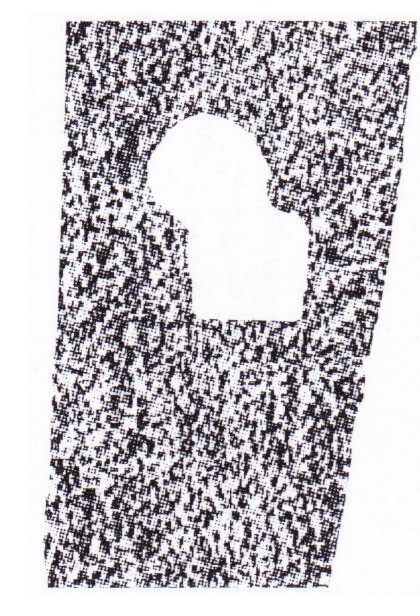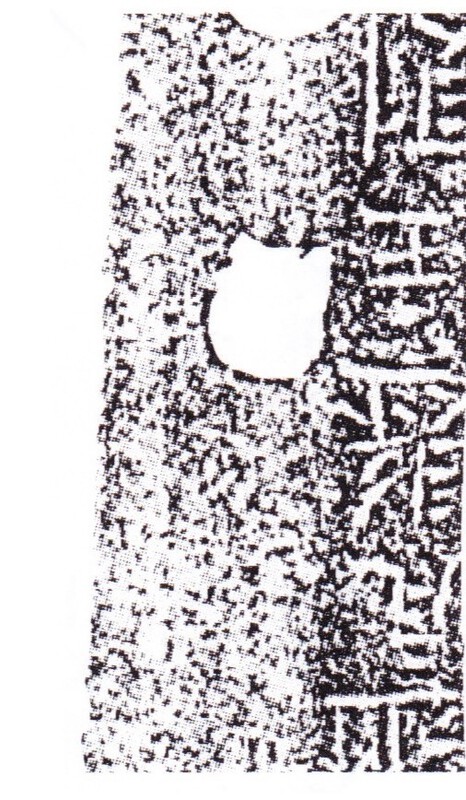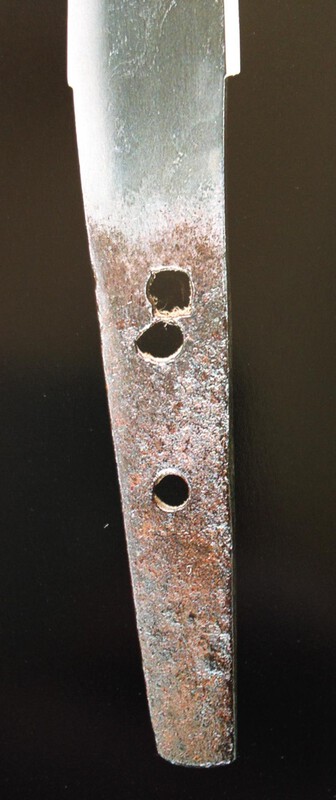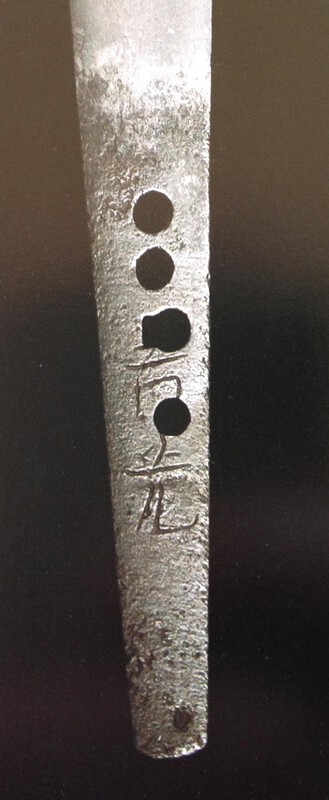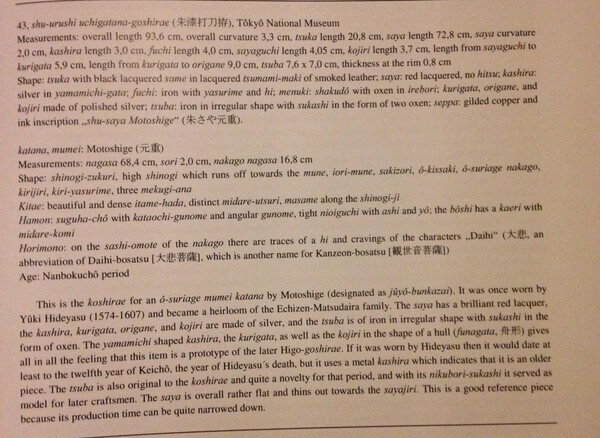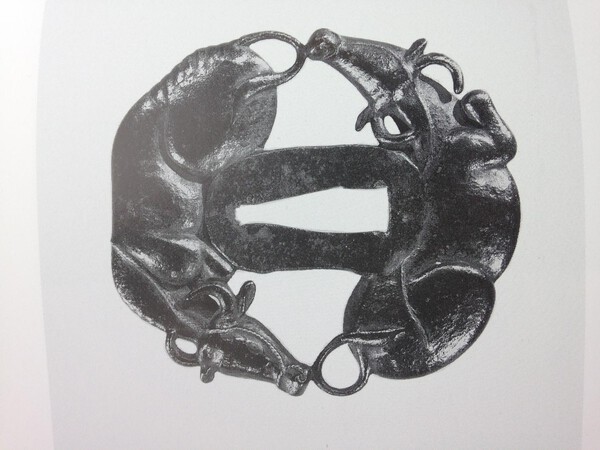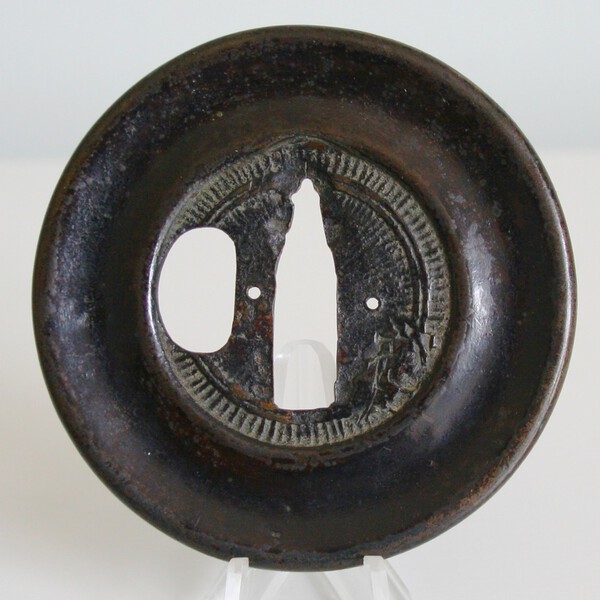-
Posts
1,813 -
Joined
-
Last visited
-
Days Won
8
Everything posted by Henry Wilson
-

Attention Namban Collectors ....
Henry Wilson replied to nagamaki - Franco's topic in Auctions and Online Sales or Sellers
My first impression was the same as Robert above. However, on a second glance, the lattice work and restrained figure renditions remind me of the Ezo style and are quite pleasing. Maybe some evidence that Ezo style is more a derivative of China than an indigenous Tohoku style. It is interesting that kogatana is connected to the kozuka. Interesting stuff indeed. -
I just read the article and thanks again for bringing it to my attention. I am wondering about the aburi and tsutsumigane styles as seen below, as opposed to actual square openings. The reason given for the shapes attached is to tighten the peg. For such a reason I can't see how the square shape came about though. Something to meditate on I suppose. ????
-
Thank you both very much.
-
Does anyone have any ideas or theories on square mekugi-ana? Below are a few examples of what I am referring to. To me they look like round holes squared-offed and I for some reason associate them with koto blades of an above average quality. I don't think there were ever square pegs for tsuka. Any comments would be greatly appreciated. Thanks very much in advance.
-
Personally speaking I think some people could mistake the stand as part of the tsuba. If the stands were made of Perspex I would not think that the tsuba looked like shaving mirrors. A nice display none the less. 9 out of 10 if it were a Eurovision contest.
-
I would say the squiggles are more than likely worm holes, implying the base is old wood. Driftwood and sea shells. I would agree with the Aizu Shoami call. The shape of the iron plate, especially the roundness of the edge, and the placing of the soft metal inlay make me think so.
-
You're welocome Christian. I am not sure about the attribution of the tsuba but it is from a koshirae apparently owned by Yuki Hideyasu and the Echizen Matsudaira family. The write-up says it could be a Higo style koshirae prototype. Posted from iPhone so sorry if the pics are upside down.
-
-

National Treasure Swords (And Koshirae) Of Japan
Henry Wilson replied to Paul Martin's topic in Nihonto
Count me in. An A4 hard cover if possible. -
KTK catalogue 2014 has a write up by Saulius V. Ploplys on a koshirae that contains a kogatana with a blade inscribed with the legend of Rokkasen. He makes some very insightful comments and observations that are worth reading if anyone is interested in Anthony's kogatana.
-

Restoration Of Tosogu, Nihonto, Etc...
Henry Wilson replied to Steve Waszak's topic in General Nihonto Related Discussion
Thanks Jean. You could very well be right. -

Restoration Of Tosogu, Nihonto, Etc...
Henry Wilson replied to Steve Waszak's topic in General Nihonto Related Discussion
Hi Steve Thank you for the reply. No need to apologise for all the questions. This is an interesting issue that begs to be questioned. Sorry for sounding so blunt, which was not my intention. Below are responses to your questions and some additional thoughts. Just my humble opinions which could change the more I read and discuss. "for the past to be relevant it must be framed in the present and this continuity and relevance is established through change." I was a bit confused by your words here, though” By framing I meant cognitive framing, how reality is organized, perceived, and communicated about. I was trying to rehash some of Matero’s comments in the referenced article (see below). “by "change," did you mean that the object under conservation efforts would be physically changed/altered?” Yes, that is what I meant to say. Timothy P. Whalen summarises Matero by saying “All conservation is a critical act, one of interpretation," states Frank Matero in his essay on ethics. This view should not be feared or construed as negative, for if the heritage from the past is to remain relevant, we must pursue its connections to the present. "Conservation," says Matero, "seeks to establish continuity through controlled change." Taken from: http://www.getty.edu/conservation/publications_resources/newsletters/15_1/feature1.html I completely agree with the above statements. It seems that to consider restoration and conservation in the first place, change has already happened as mentioned above by Ian. While there is an appreciation of change and decay in some Japanese art (wabi sabi) I think there is a fuzzy definition to what it is, and in many cases a matter of subjectivity as to whether it is wabi sabi or boro boro (shabby). But even if wabi sabi is apparent, to protect objects from losing their essence and artistic worth because of degradation, some sort of intervention is required to slow this degradation. This would require change and alteration, which is what restoration involves. By counteracting this negative change, positive change must happen. But as Matero says, it must be “a critical act, one of interpretation” indicating that the change must be done sensitively and properly. This leads to what I think is the main point of this discussion. For a piece to be ‘properly’ restored; how can it be decided what it should be restored to? In some cases I think it could be quite easy. Take for example the shrine offerings illustrated in “Uchigatana Goshirae” (I am on the train, so can’t access the book for the actual name). If anyone decided to restore them, there are plenty of complete examples that can be used as a guide for appropriate restoration. For a more abstract case, take for example this papered Ko Kagamishi tsuba of mine (picture by Mariusz Kolecki) discussed here: http://www.militaria.co.za/nmb/topic/11303-ko-kagamishi-tsuba/ To restore it, there maybe not so many reference pieces of the same kind of tsuba available, but a specialist can accurately guess what it would be like from what is left of the patterns, the norms of tsuba and referencing to other related sources such as old mirrors. It becomes slightly harder with the likes of the Kaneie tsuba above. Kaneie tsuba are rare and patina possibly varied from piece to piece. Is this lack of certainty a valid reason to not restore it? I personally don’t think so as long as there is no real risk of it a restoration degrading it further. In theory, rust will be removed and patina applied. It does not matter if the patina is close to the original because we will never know what the original was like in the first place. I think that by restoring it, it would be hard to disagree that its artistic worth has been enhanced. -

Restoration Of Tosogu, Nihonto, Etc...
Henry Wilson replied to Steve Waszak's topic in General Nihonto Related Discussion
I have read about that very tsuba and if I recall it is believed that it has been over cleaned at one point over the past 80 years by a well-intended but inexperienced curator. From the photos, to me, the condition seems unacceptable. Unfortunately, the politics involved with such an item seem to have resulted in it being put in a drawer and forgotten. I feel that too many questions are being asked at once. To try and delineate a theme that I can comment on, the first thing that I would point out is that conservation and restoration are related concepts but two different issues. Conservation is concerned with the maintenance and up keep of something that tends to degrade quite rapidly as not part of an ageing process. It seems that modern conservation is regarded as being transformative, dictated by contemporary values and beliefs which in turn could be broken down further into politics, economics and technology. The argument seems to be that transformation is not a bad thing as for the past to remain relevant it must be framed in the present and this continuity and relevance is established through change. A quick Google Scholar search uncovered this interesting source: http://www.getty.edu/conservation/publications_resources/newsletters/15_1/feature1_2.html Restoration appears to differ as it is concerned with breathing new life into something that is regarded to have changed from a better state that does not fit with perceived aesthetics of the piece. Restoration is something that a lot of us have considered if we think about how often polishing swords is discussed. A recent thread revealed to me that polishing techniques have evolved enabling polishers to bring out more in swords and the advent of the light bulb has enable us to see more sword activity. This suggests that technology has altered our appreciation and evaluation of objects, not a bad thing if we bear in mind the above mantra for conservation that change is keeping the historical item relevant. I think a professional should be able to tell very easily the difference between artistic intent, graceful ageing or neglect, and would only do work that is deemed as being beneficial to the item to the extent necessary to get the item back on its feet again. By not addressing a restoration issue in the name of keeping it an original state, there is a chance that an item of antiquity could fall by the road side. After all who collects rusty swords? -
I was always under the impression that the ridge (shinogi) gave added strength which is needed as the sword got longer. Kind of what Thomas says above but lateral strength as opposed to stability.
-
-
The conventional wisdom says that the long hitsuana suggests an older piece. The motif is quite pleasing of two mushrooms. A look at either of Sasano's book would be interesting I think. Hope this helps.
-
The emphasis seems to be on the appearance of the leather and the lacquer coating as opposed to utility. Therefore, I would say it is an Edo period revival peice intended to recreate and elaborate on the early leather covered tsuba of myth and lore. Or some sort of exaggerated theatrical costume piece.
-
Used my PC and just ordered a hard copy. The discount coupon means I basically got free shipping!! Many thanks everyone.
-
Got mine too. Thank you very much. (The link for the Lulu hard copy seems to be down. Will try again later.)
-
Nice... very nice. The kozuka is a splendid touch, very... playful. A purple sageo might be nice, to break up the homogeneity, as the kozuka seems to do.
-
Wow! The best post I have read here in ages. Thank you Ford.
-
If my memory serves me well, the since deleted message from Mr Tsuruta included something like if NTHK NPO papers come with an item, many collectors and dealers in Japan treat the item as being fake. Seems like a pretty lame thing to write down and send to someone. It makes me wonder what kind of people we deal with.
-
No probs Chris. Just found this link. Might be of interest. http://fudosama.blogspot.jp/2005/02/oni-Japanese-demons.html?m=1



